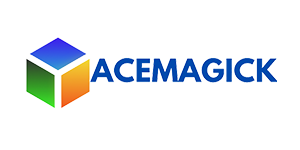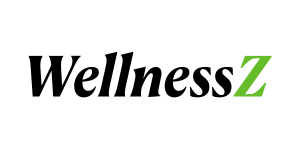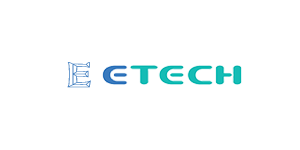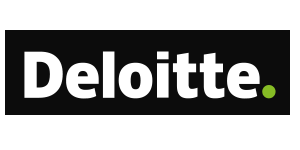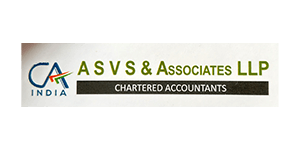Project
Management Dashboard
Software
No credit card required

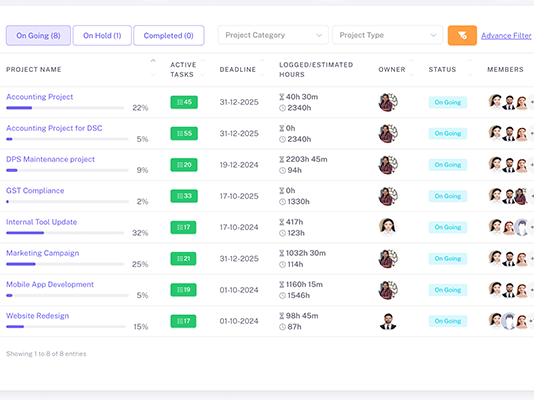
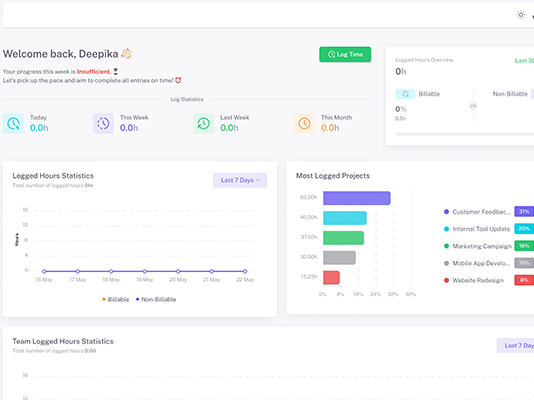
Key Features of Project Dashboards
Get more done with less guesswork. Karya Keeper’s project dashboards bring clarity to your team’s daily execution — combining task visibility, progress tracking, time logging, and document access into one unified interface. Whether you’re managing one project or many, these dashboards help you stay informed, aligned, and in control.

Comprehensive Project Insights
Gain complete visibility into every project from one centralized dashboard. Karya Keeper’s project dashboards bring together key metrics like project status, milestones, and task summaries — so you always know what’s on track and what needs attention.
- Project Overview: Get a unified view of everything that matters — from tasks, assignees, and documents to deadlines, milestones, and budget indicators — all in one dashboard designed for real-time visibility into project health and priorities.
- Logged Hours Summary: Monitor time spent on each task and project to ensure accurate tracking and accountability.
- Overall Project Status: Get quick visibility into project ownership, categories, and time performance. Visual indicators show project status, while circular progress graphs and logged hour comparisons help track momentum week over week.
Real-time Updates & Notifications
Karya Keeper keeps your team aligned and responsive with real-time notifications for project progress, task assignments, and milestone changes — so nothing slips through the cracks.
Instant Notifications: Receive live updates on project statuses, assignments, and key milestones to ensure timely actions and decisions.
Automated Reporting: Schedule reports to be delivered automatically to stakeholders, saving time while keeping everyone informed.
- Activity Timeline: Track every change in real-time with a timestamped activity log. From task edits and milestone updates to file uploads and completions, every action is recorded for full transparency and auditability.
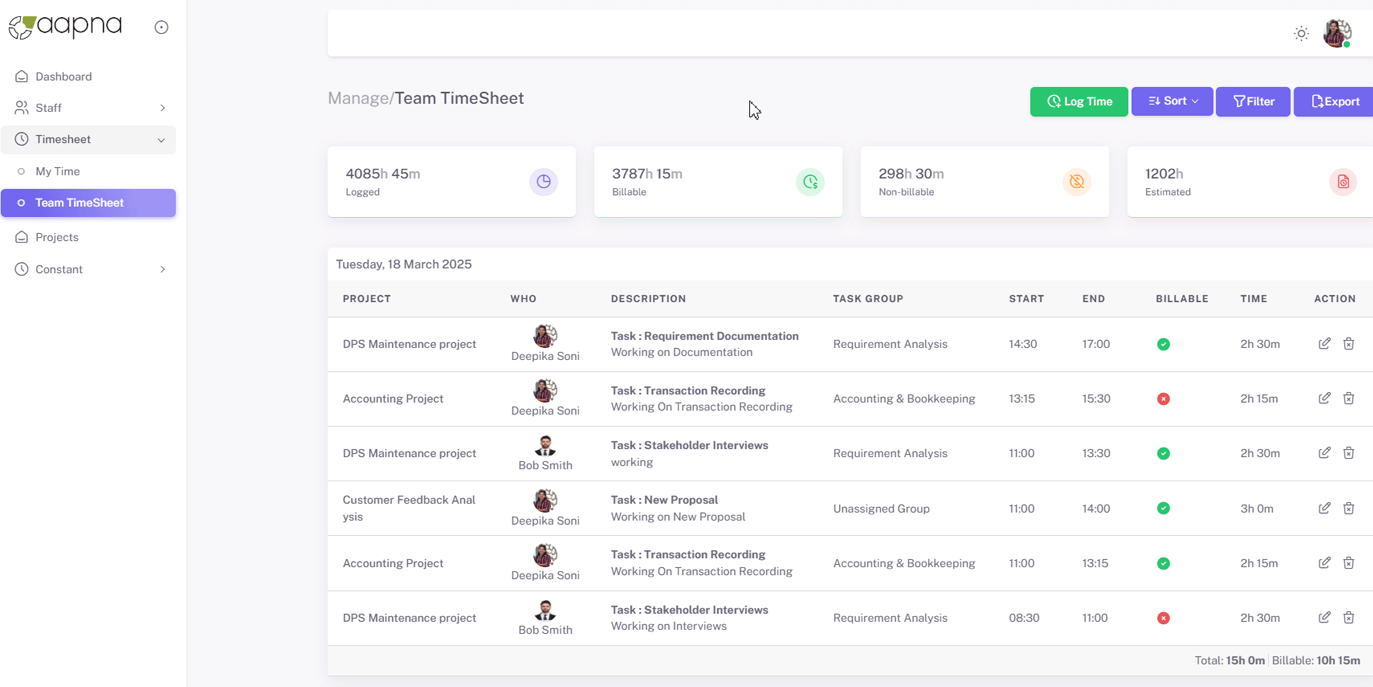
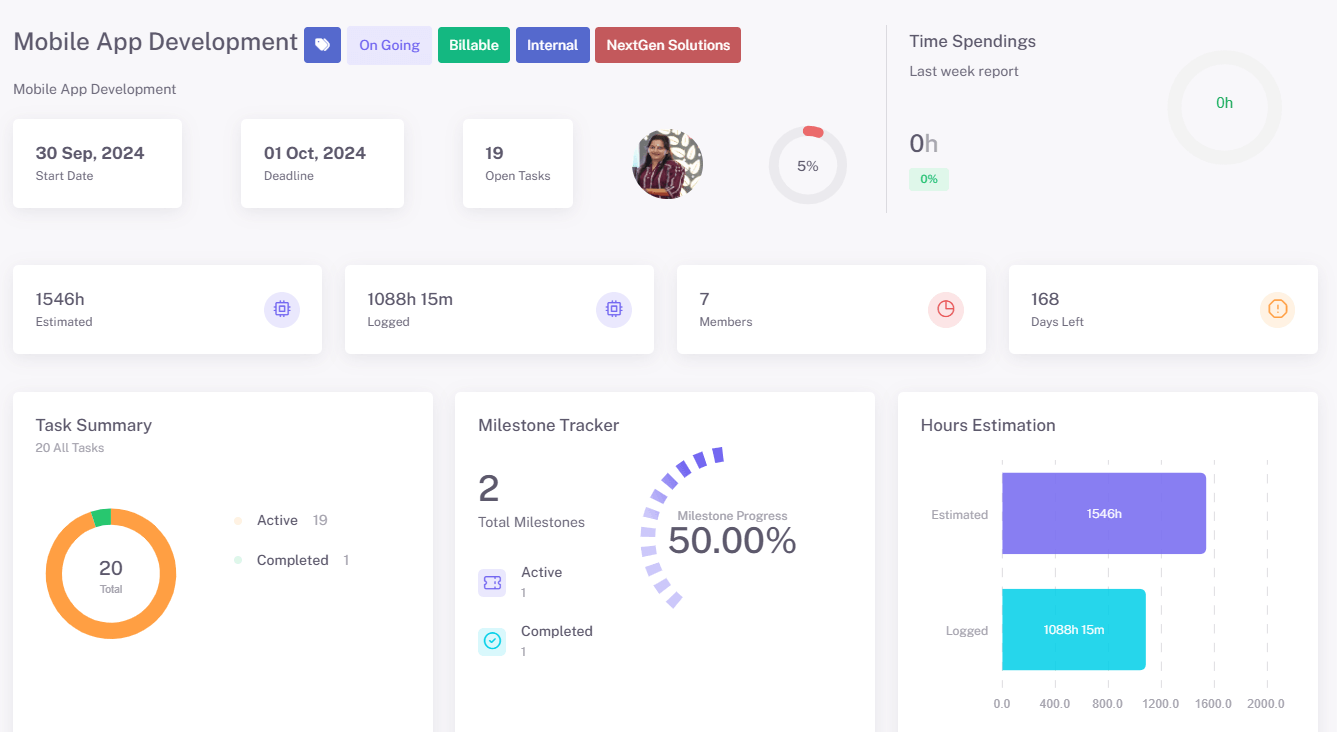
Data Visualization for Decision-making
Turn complex project data into clear, actionable insights. Karya Keeper’s interactive dashboards use charts, graphs, and performance metrics to help you identify trends, track progress, and respond with confidence — in real time.
Interactive Charts & Graphs: Drill into key metrics and visualize performance at every level for faster, smarter decisions.
Performance Trends: Compare team or project performance over time to identify patterns, optimize workflows, and course-correct before issues escalate.
Assigned Project & Task Overview
Stay focused on what matters most. Karya Keeper’s dashboard gives you instant access to assigned projects and top-priority tasks — so your team can stay aligned, hit deadlines, and manage workload more effectively.
Assigned Project Details: View project names, task lists, due dates, and ownership details — all in one place for faster execution.
Top Due Task Overview: Quickly identify upcoming deadlines and key milestones to prioritize work and prevent last-minute rushes.
- Task Summary & Distribution: Visual graphs categorize tasks as Active or Completed, while a progress bar shows overall task completion — giving project managers a quick pulse check.
- Task Group Management: Organize related tasks under custom groups like “Design,” “Development,” or “Testing.” Use bulk actions to reassign, update, or move entire task groups with just a few clicks.
Task Search & Filters:
Easily find any task by name, assignee, status, or tag. Advanced filters help teams navigate large projects and focus only on what’s relevant.
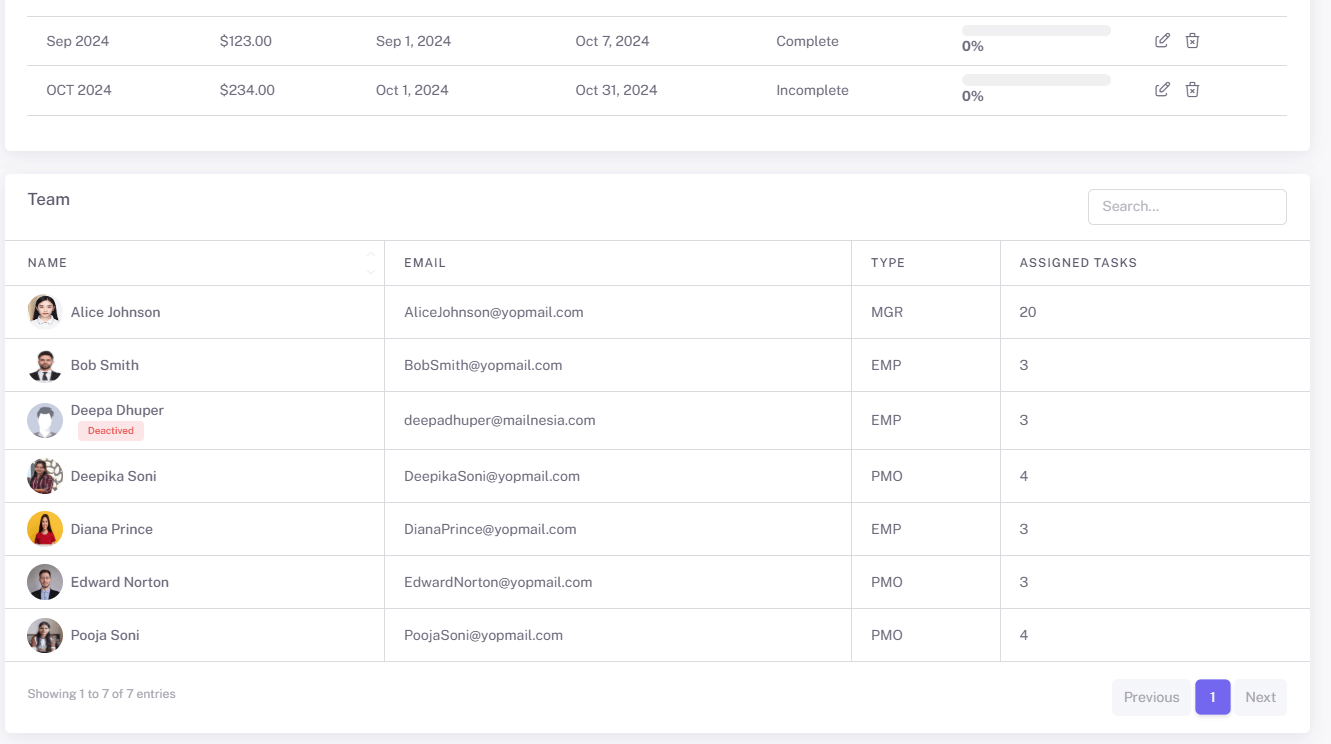
Benefits of Project Dashboards
Karya Keeper’s project dashboards go beyond basic task tracking — they help your team operate with clarity, focus, and speed. Here’s how your organization benefits from adopting a project dashboard:
Track every task, milestone, and status update as it happens — all in one centralized dashboard.
Use case: Project managers get immediate visibility into team workloads and upcoming deadlines, reducing the need for daily status calls.

Instant access to live project data allows managers and leads to make informed decisions without delays.
Use case: An operations head sees timeline slippage on a key deliverable and reassigns resources in time to avoid a missed launch date.

With clear ownership, time logs, and task statuses, every team member knows what they’re responsible for — and by when.
Use case: A remote team can self-manage more effectively because expectations and updates are visible to all.
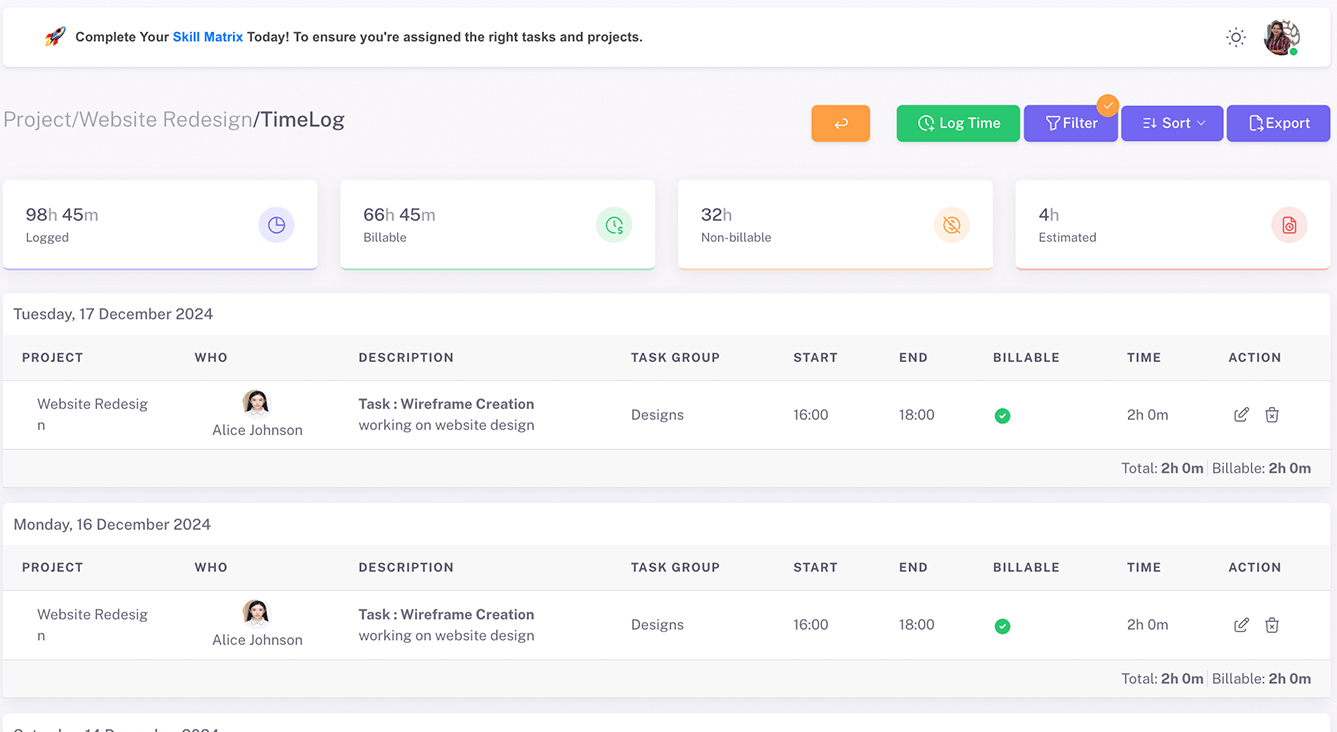
Dashboard alerts and real-time tracking make it easy to identify bottlenecks early and take corrective action.
Use case: A product lead catches a design backlog two days early, preventing a chain reaction of delays in development.
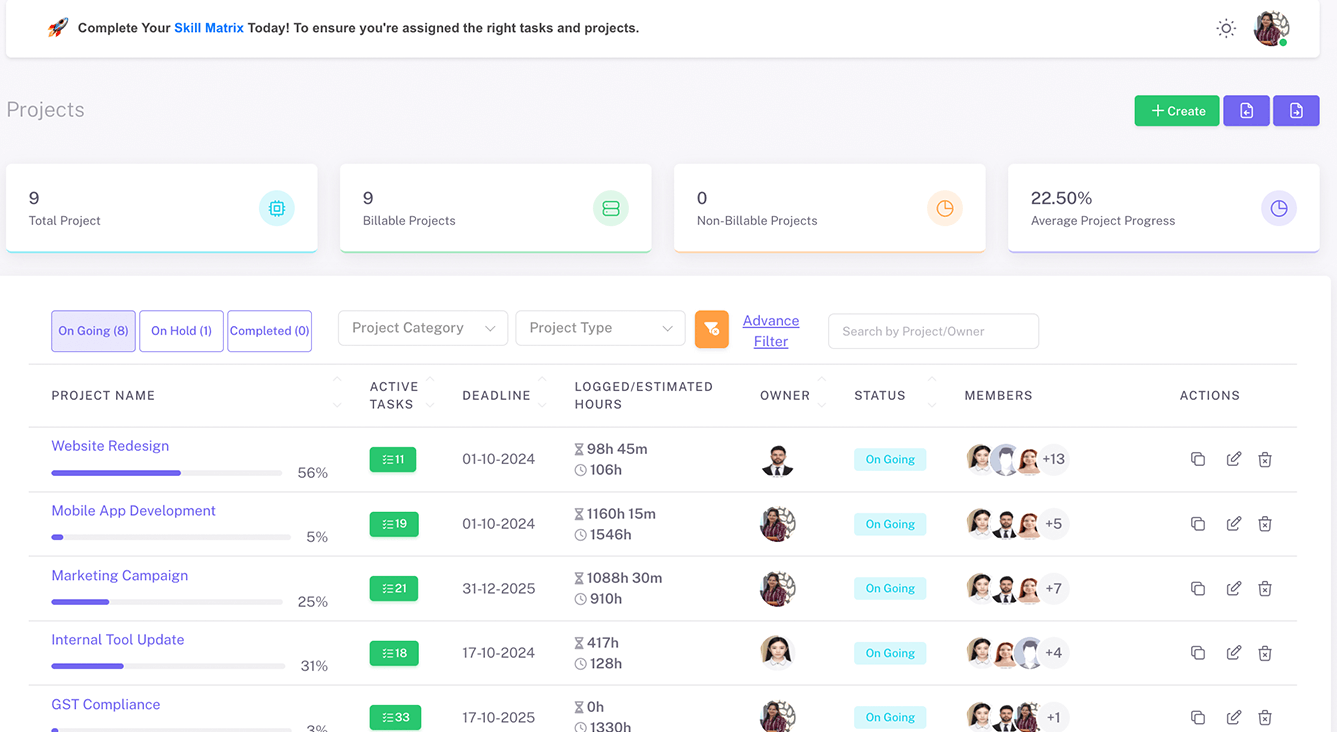
Teams across departments can access shared views, update task statuses, and attach critical files — all in one interface.
Use case: Marketing, sales, and customer success teams can align on campaign rollouts without lengthy email threads.
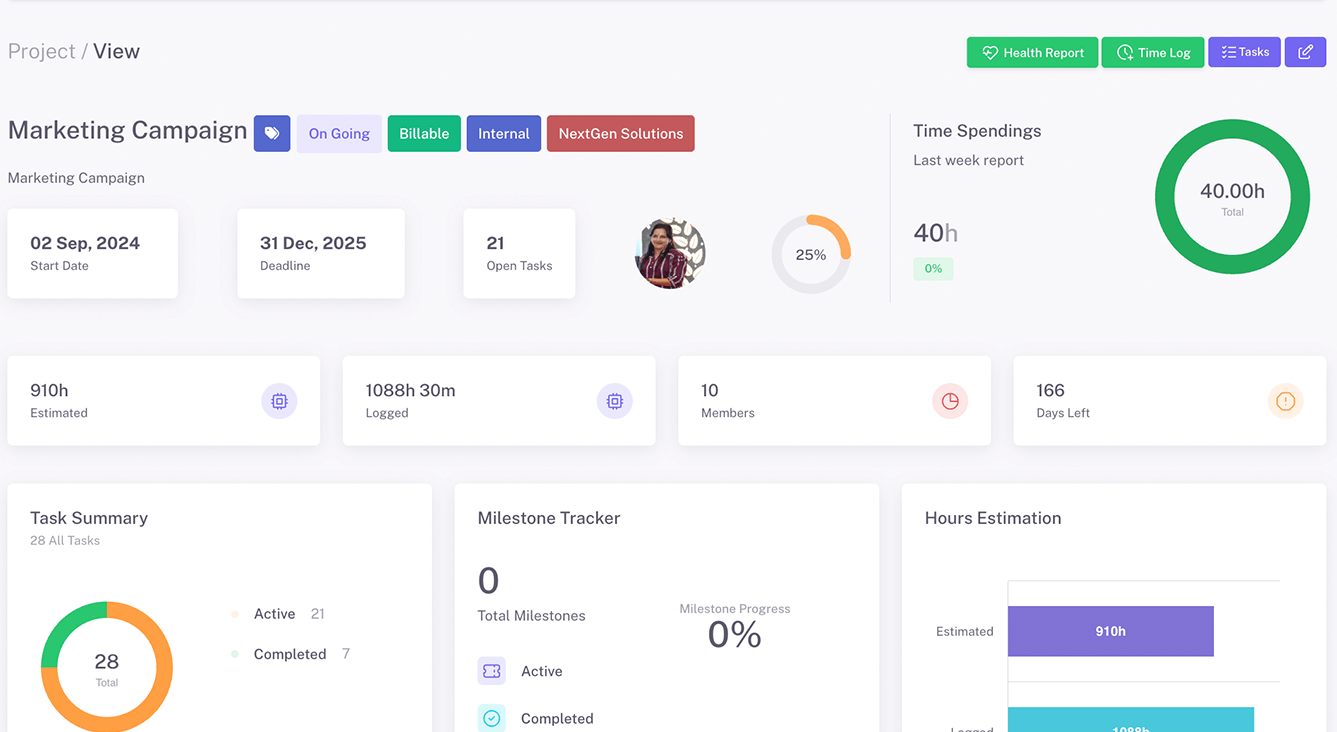
Track time spent, workload distribution, and resource utilization across projects to optimize productivity.
Use case: A services firm identifies underused team members and reallocates them to high-priority client work.
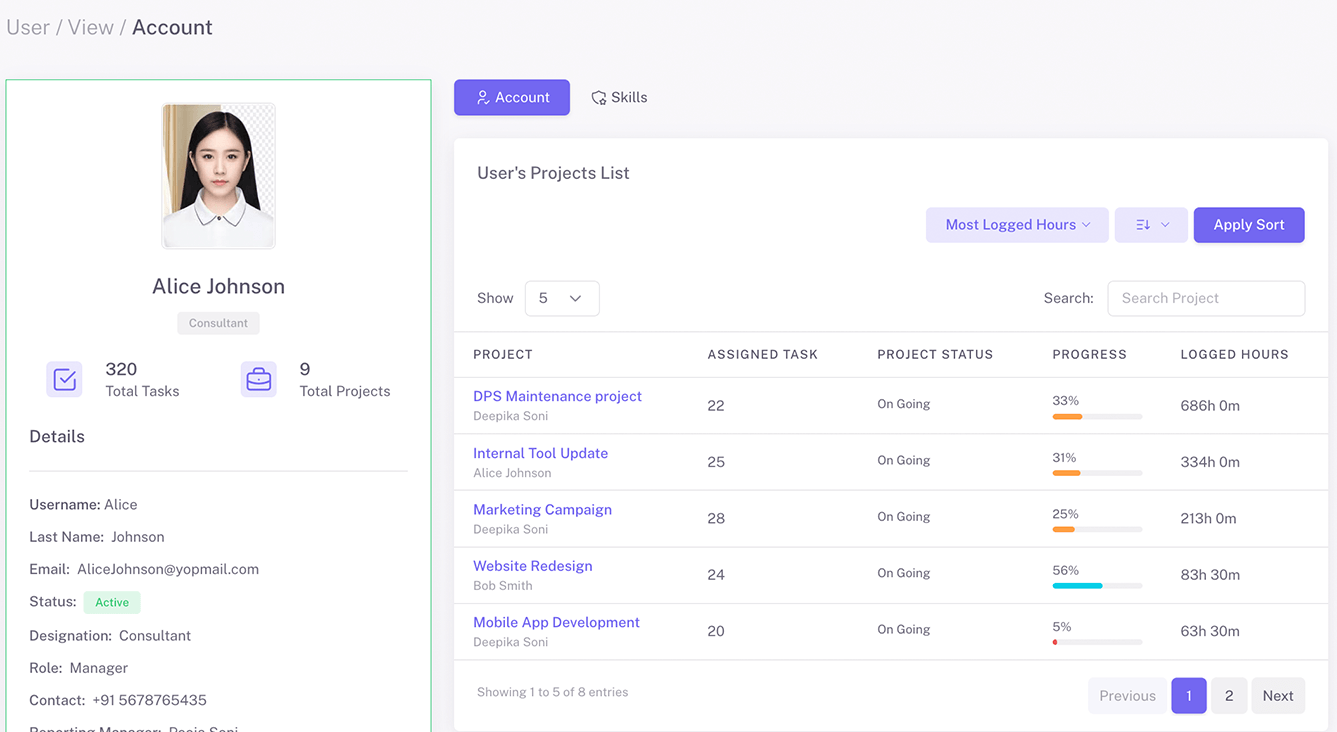
FAQ
What is a project dashboard, and how does it benefit project management?
A project management dashboard visually displays key project metrics, data, and performance indicators—all in one place. It provides stakeholders, project managers, and team members with a real-time snapshot of the project’s progress, status, and health. Here’s how it benefits project management:
- Stay Up-to-Date in Real-Time – With live updates, you’ll always know what’s happening at any given moment. No more waiting for emails or meetings to get the latest info.
- Track Performance Easily – Whether it’s tracking tasks, budget, or resource usage, the dashboard has it all laid out for you. You can spot any issues early and take action before they become big problems.
- Be Transparent and Share Progress – Everyone involved in the project can see exactly what’s going on. It builds trust and keeps everyone on the same page, making collaboration smoother.
- Communicate Clearly and Effectively: Use the dashboard to communicate progress, risks, and priorities with stakeholders. It’s a visual way to share information that’s easy to understand for everyone involved.
- Spot Risks Before They Hit – By highlighting potential risks, you can tackle them head-on and keep the project on track. It’s like having a radar for trouble spots.
- Make the Most of Resources – With insights into resource allocation and workload, you can make sure everyone is working efficiently and effectively.
So, think of the project dashboard as your trusty sidekick in managing our project. It’s there to help us stay organized, informed, and on top of things every step of the way.
resentation of key project metrics, data, and performance indicators consolidated into a single view. It provides stakeholders, project managers, and team members with a real-time snapshot of the project’s progress, status, and health. Here’s how it benefits project management:
What are the essential elements of an effective project dashboard?
Essential elements of an effective project dashboard include –
- Metrics to measure project performance
- Visual representation of task status and progress
- Resource tracking and allocation features
- Risk assessment and mitigation features
- Timelines and milestone tracking
- Communication and integration tools
How can project dashboards improve communication and collaboration among project stakeholders?
Project dashboards are very useful in improving communication and collaboration among project stakeholders. They provide a centralized platform for information and resource sharing. By providing real-time data and information they aid in keeping the stakeholders on the same page and also promote transparency. The communication tools within the platform allow stakeholders to share information without any delay.
Are project dashboards customizable to suit different project management needs?
Project dashboards are highly customizable and therefore suit different project management needs. They can be customized to display certain specific key metric indicators (KPIs), data, and functions based on the specific needs of the project and organization.
How can project dashboards integrate with other project management tools and systems?
The dashboard helps you and your team stay on track by clearly showing upcoming deadlines and key milestones, so you can prioritize tasks effectively.










